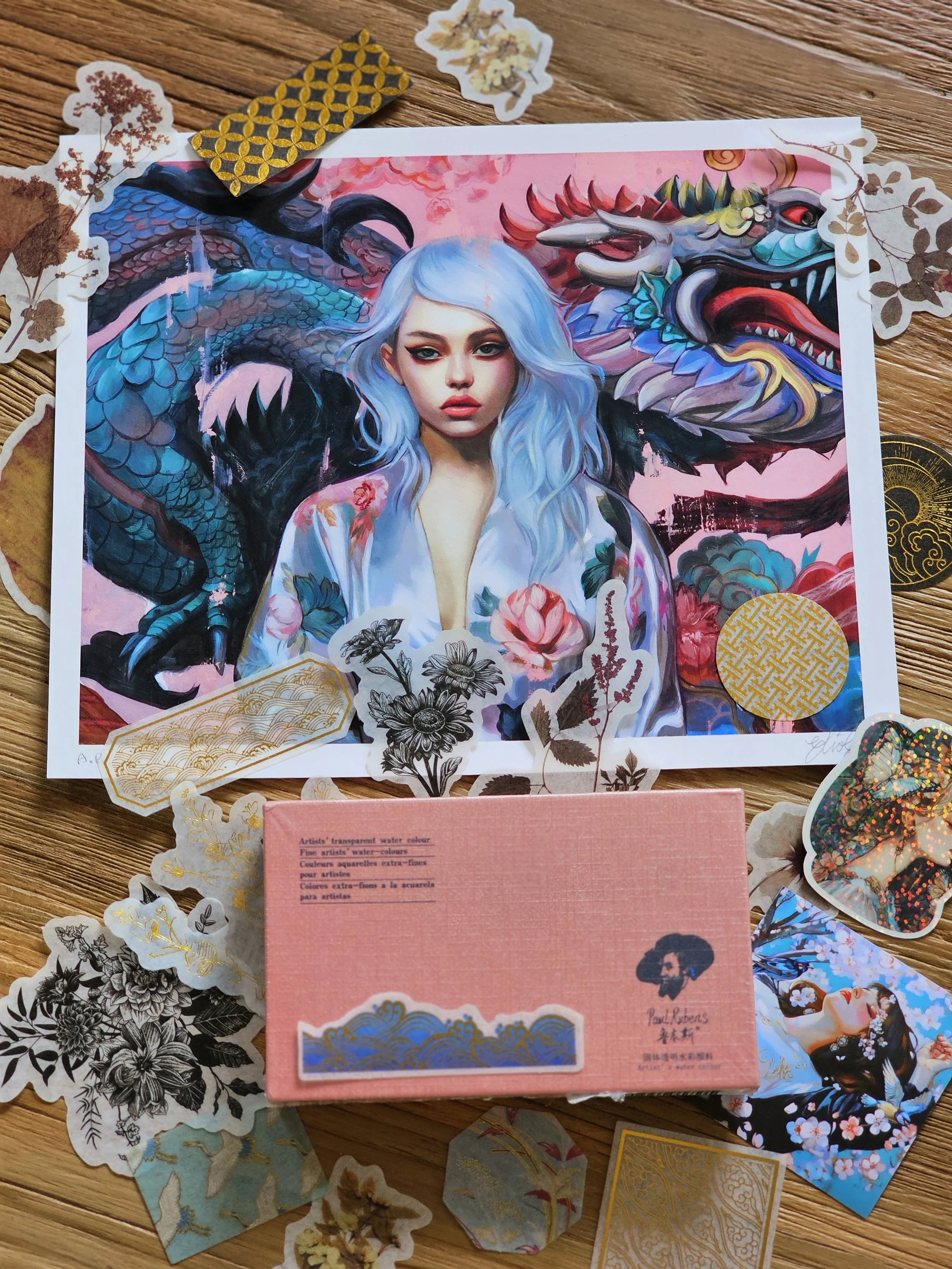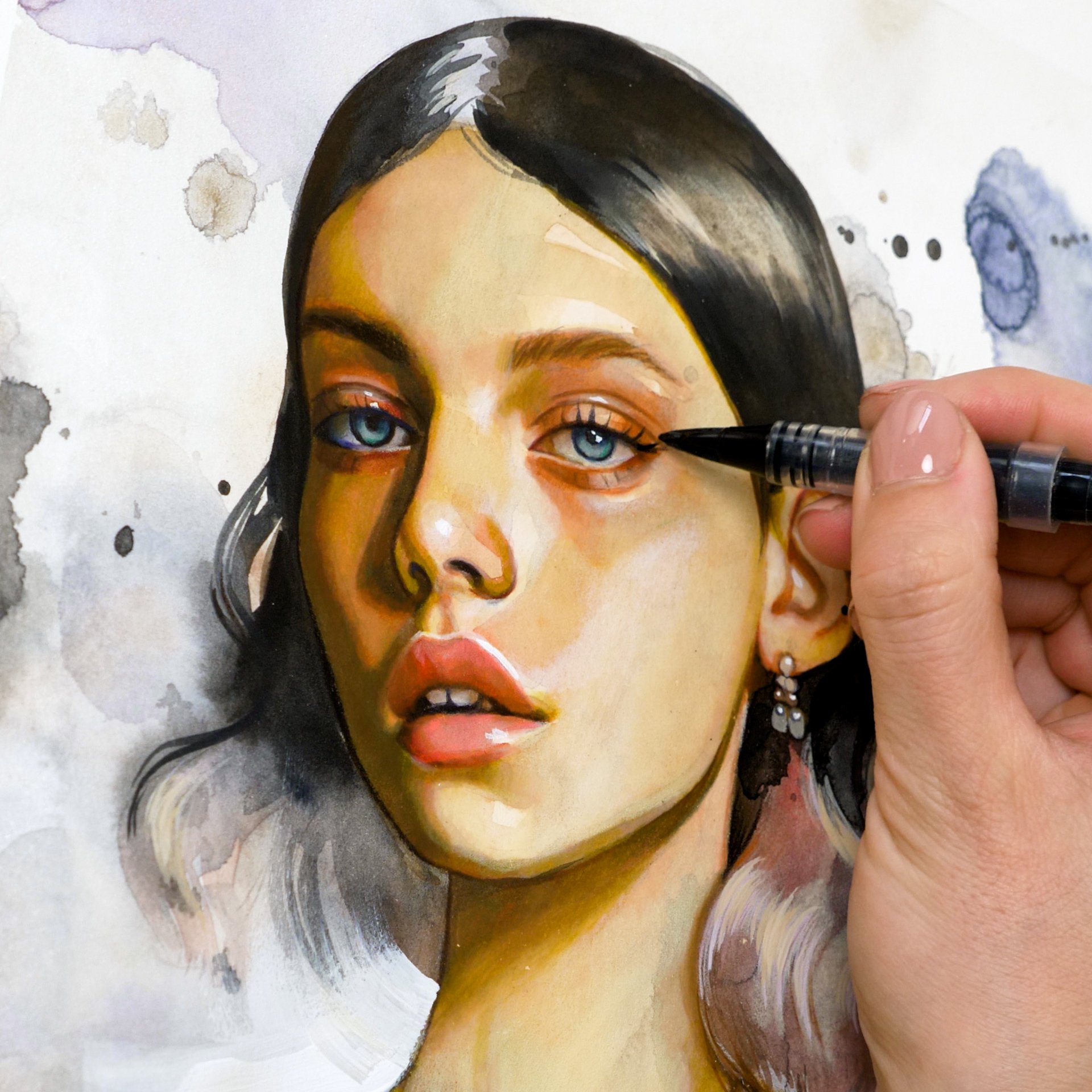In the rapidly evolving world of technology, AI has become an integral part of many fields, including art. As an artist, I have found that incorporating AI into my creative process has opened up new possibilities and expanded my artistic horizons. However, I have also encountered significant pushback from some who view the use of AI in art as unethical. In this post, I aim to address these concerns and explain why I believe AI can coexist with traditional artistic practices, enhancing rather than detracting from the creative process.
Addressing Ethical Concerns and Unethical Use of AI
One of the biggest concerns about AI in art is the use of copyrighted materials to train these models. Critics argue that this practice is essentially stealing intellectual property since AI can produce works that closely resemble those of existing artists, all without their consent. This is a valid worry and something we definitely need to talk about.
Counterargument: Transformative Use and Fair Use Doctrine
It's important to understand that the current legal framework in the U.S. supports the fair use of copyrighted materials for training AI models. According to the Association of Research Libraries, using publicly available internet materials to train AI is considered fair use. This is because the purpose of these materials in AI training is transformative. They serve as data to teach the model rather than as finished works of art to be enjoyed in their original form (Association of Research Libraries) (CRS Reports).
This approach is similar to the Google Books case: Digitizing and storing books to create a searchable database was deemed fair use because it transformed the books' purpose. Similarly, AI models use image-text pairs to understand relationships and generate new, unique images, not to replicate the original works (Creative Commons)
Moreover, the images used to train AI models aren't stored or reproduced as they are. AI models don’t make a “collage” out of artworks, as some people
believe, instead, the images are transformed into data that helps the AI understand patterns and generate something entirely new. This process is much like how artists learn from and are inspired by existing works to create something original and innovative.
Countering the "Unethical" Argument
When people say that using AI in art is "unethical," they often mean it undermines human creativity or unfairly uses existing works. Let's break this down:
Undermining Human Creativity: AI isn't here to replace human creativity but to enhance it. It can handle repetitive tasks, generate new ideas, and provide inspiration, freeing us up to focus on the more nuanced and expressive aspects of our work. Just as digital tools like Photoshop have enhanced rather than replaced traditional art, AI offers new tools that expand what we can achieve.
Unfair Use of Existing Works: The ethical use of AI involves respecting the rights of original creators. The principle of fair use supports the transformative use of copyrighted materials, which means using them in a way that adds new meaning, message, or purpose. AI models don't copy and reproduce art; they learn from patterns to create new, unique pieces. This practice is deeply rooted in the tradition of art, where artists have always learned from and been inspired by past works to create something new and original (Association of Research Libraries) (Creative Commons).
Ethical Safeguards and Transparency: The development of AI models can incorporate ethical safeguards, such as fair use filters, to ensure that generated works don't infringe on existing copyrights. Transparency about how AI models are trained and the sources of their data can also help address ethical concerns, ensuring that artists and the public understand the transformative nature of AI-generated art (Stanford HAI).
Class-Action Lawsuit and Ethical Use
Recently, there has been a class-action lawsuit in the United States concerning the use of AI in art. I want to make it clear that if the outcome of this lawsuit deems the use of AI in art illegal in the US, I will comply with the resulting laws for the US-market. However, since I am based in Germany, this decision will not directly impact my ability to use AI here unless similar legal rulings are made in Germany. If AI can be used legally and ethically, I see no reason to cease incorporating it into my creative process. It's important to understand that the legal landscape is evolving, and as artists, we must adapt to these changes responsibly.
Leveraging AI for Artistic Growth
Despite these concerns, I genuinely believe that AI can be a valuable tool for artists if used ethically. It's not about replacing human creativity but enhancing it. For instance, AI can help generate preliminary sketches, suggest new compositions, and even simulate different artistic styles, allowing us to experiment and explore without the constraints of traditional methods.
how I use AI
I use AI generators such as Midjourney or Getimg.ai to create digital references for my traditional paintings, which often undergo a complex process in which I alter and replace the tiniest details in a composition to create the desired references for my paintings. I then make a linework out of the reference, transfer it onto my canvas or paper, and start my traditional painting process using watercolor, acrylics, or oils. Read my first blog post about my process and general Disagreement with the Anti-Ai movement here
AI as an Educational Tool
For aspiring artists, AI can serve as an incredible educational resource. Imagine having access to personalized tutorials, critiques, and simulations of various artistic styles. This can accelerate learning and mastering skills, helping artists develop their skills more rapidly and deeply.
AI can also introduce us to new perspectives and techniques we might not have considered otherwise. By analyzing vast amounts of data, AI can uncover patterns and trends that can inspire innovative approaches to art. This symbiotic relationship between artist and AI can lead to unprecedented artistic breakthroughs.
Addressing Online Criticism
The criticism I receive on social media for using AI in my art is something I take seriously. While I understand the concerns and the emotional responses from other artists and art enthusiasts, negative and hostile comments do not contribute to constructive dialogue or solutions. It's essential to approach this conversation with respect and a willingness to understand different perspectives.
Impact on Traditional Artists
I am deeply aware of the concerns that AI-generated art can sometimes overshadow traditional artists, particularly those who sell their work online. It saddens me to see how this can impact individuals' livelihoods. Increased competition on platforms like Etsy can be challenging, and it is truly unfortunate when it affects sales. However, using AI in art is not illegal or prohibited. It's a part of our evolving world that we must adapt to. Rather than resisting these changes, we should focus on finding ways to coexist and support one another in this evolving landscape.
Commitment to Ethical Practices
My commitment to ethical practices in art remains unwavering. I believe in transparency about how I use AI and strive to respect the intellectual property rights of others. I use AI to realize my artistic vision and aesthetic preferences further.
The Silent Majority vs. The Loud Minority
When discussing the acceptance of AI in art, it’s important to consider the concept of the "silent majority" versus the "loud minority." The loudest voices on social media and in public debates are often the ones we hear most clearly, but they do not always represent the majority opinion.
Silent Majority
The silent majority consists of individuals who may agree with the use of AI in art but choose not to voice their opinions publicly. This could be due to various reasons, such as fear of backlash, a desire to avoid conflict, or simply a preference for observing rather than participating in debates. The silent majority often plays a crucial role in shaping societal trends, even if their influence is less visible.
Loud Minority
On the other hand, the loud minority is made up of individuals who are highly vocal about their opinions, often passionately and sometimes aggressively. This group can create the illusion that their perspective is more widely held than it actually is. Their volume and persistence can dominate conversations, potentially skewing public perception of what the majority believes.
Is the Majority of Artists Against AI Art?
The true stance of the broader artist community on AI in art is challenging to determine without comprehensive surveys or studies. Anecdotal evidence and vocal online criticism might suggest a strong opposition, but this does not necessarily reflect the views of all artists. It's possible that many artists are open to the use of AI, or at least indifferent, but choose not to engage in public debates.
In Conclusion
I want to emphasize that my use of AI in art is not a directive for others to follow. If you do not like AI or prefer traditional methods, that is entirely your choice. My intention is not to force anyone to adopt AI but to offer a perspective on how it can be a valuable tool for creativity. Each artist has their own unique journey and approach, and it's important to respect those differences.
Art is a deeply personal and evolving practice. As we navigate this rapidly changing landscape, let's remain open to new ideas while honoring the traditions that have shaped us. Together, we can create a diverse and vibrant artistic community where all forms of expression are valued and respected.
Remember, art is about exploration and expression. Whether you choose to embrace AI or stick to traditional methods, the most important thing is to keep creating and sharing your unique vision with the world. Let's support each other in our creative endeavors and celebrate the beauty and diversity of art in all its forms.
Thank you for taking the time to read my thoughts. If you have more questions or are interested in more aspects of this topic, write them in the comments! 🥰






















